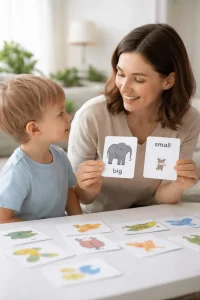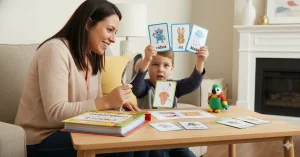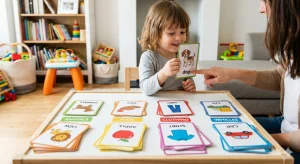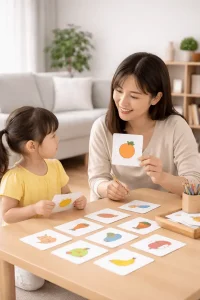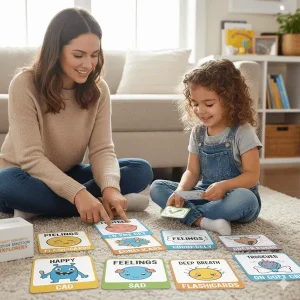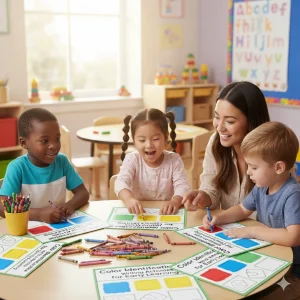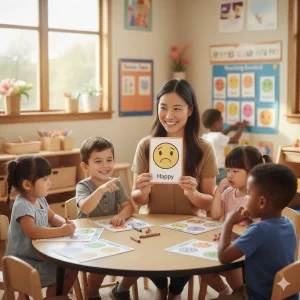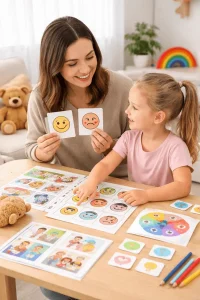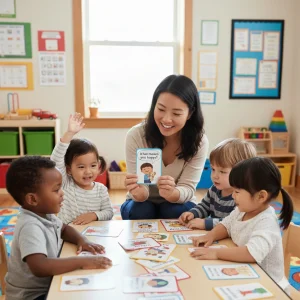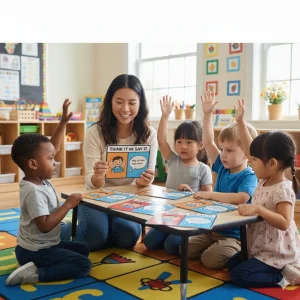What Does It Mean If My Baby Doesn’t Engage in Joint Attention?
By Rajini D
Last Updated: June 7, 2025
Is your baby not following your gaze or ignoring when you point to something exciting? You’re not imagining it — and you’re not alone. Many parents notice these moments and feel a twinge of concern. These small signs could be related to joint attention, an essential early skill that helps babies learn, connect, and communicate. In this article, we’ll gently walk you through what joint attention looks like, early milestones to watch for, and simple ways you can support your child at home. Plus, we’ll share how Wellness Hub offers compassionate, expert-backed support when you need it most.
Take the first step with our free online speech therapy consultation and talk to a licensed expert who understands early development.
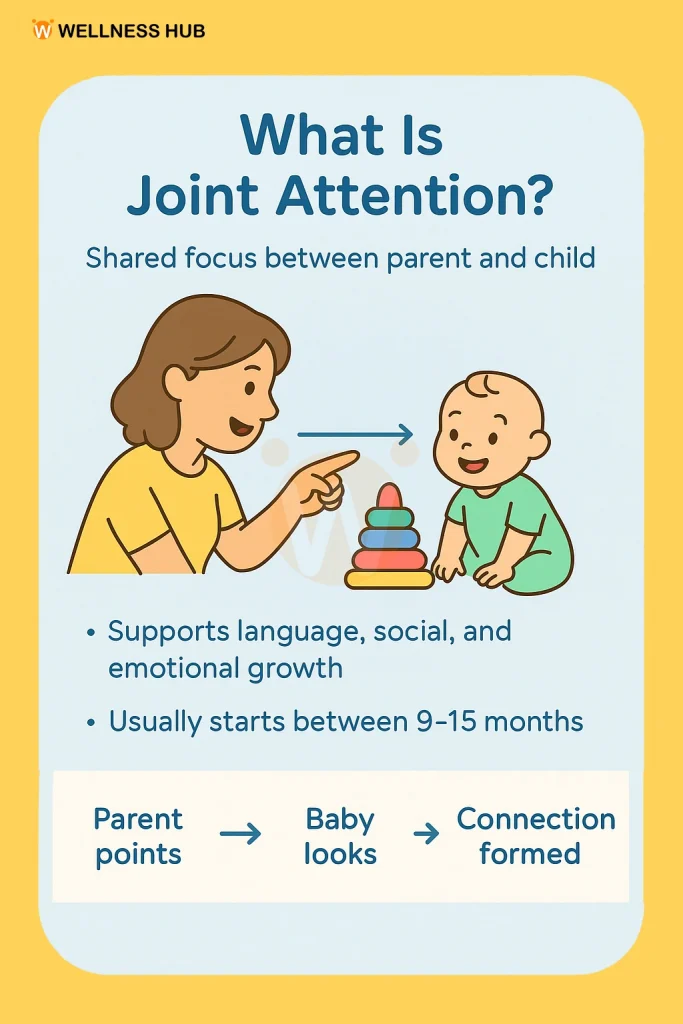
What is Joint Attention?
If you’ve ever pointed to something across the room — like a colorful toy or a family pet — and waited for your child to look too, you’ve invited them into a moment of joint attention.
Joint attention is when two people focus on the same thing together, and know they are sharing that focus. It’s one of the earliest ways babies connect with the people around them.
You might notice it when:
- You point at a ball, and your baby looks at it, then back at you.
- Your toddler excitedly brings you their favorite book to read together.
- Your child claps after you both watch a bubble pop in the air.
These small moments are big building blocks for your child’s communication and social skills. Joint attention helps little ones:
- Learn language — They link words with objects, actions, and emotions.
- Build relationships — They learn to share experiences and feelings with others.
- Understand other people — They start picking up on what others see, want, or feel.
Most babies start showing early signs of joint attention between 9 and 15 months. Some might point or show toys; others might simply look where you look. Both are important steps.
Understanding Early Milestones in Joint Attention
In the first year of life, babies are learning much more than how to crawl or say their first words — they’re also learning how to connect with you. One of the most important early skills is joint attention, where your child and you focus on the same thing and share that moment together.
By around 9 to 15 months, you might start noticing signs that your child is building strong joint attention skills, such as:
- Making eye contact with you during play or routines
- Smiling back when you smile at them
- Following your gaze when you look at an interesting object
- Pointing at things they want or find exciting
- Showing or offering toys to you as a way of sharing
- Responding to their name when you call
These small but powerful moments show that your child is learning how to share attention, thoughts, and excitement — the very building blocks for language and social development.
Most toddlers also start to use a few simple words and gestures by the time they are 12 to 15 months old. Every child’s timeline is unique, but noticing these behaviors gives you a good sense that your child is building important communication skills.
Signs That May Need a Closer Look
Every child is unique and grows at their own pace. Some toddlers are quick to share smiles and gestures, while others take a little more time. Still, there are a few early signs that might mean your child could use some extra support with joint attention.
You might want to look a little closer if your child:
- Rarely or never makes eye contact — even during playful or everyday moments.
- Doesn’t follow your pointing or gaze by 12 months — like looking where you point when you spot something interesting.
- Doesn’t point, wave, or show objects by 15 months — gestures are a key way little ones communicate before they have words.
- Doesn’t consistently respond to their name — even when they’re not busy or distracted.
- Shows little interest in people or shared activities — like not seeking you out to show a toy or share excitement.
Seeing one or two of these signs doesn’t mean something is wrong. But it does mean it’s worth paying closer attention — and getting the right guidance if needed.
Simple Ways You Can Support Your Child at Home
Helping your child build joint attention skills doesn’t have to feel overwhelming. In fact, some of the most powerful tools are already part of your daily routine. Small, playful interactions can make a big difference over time.
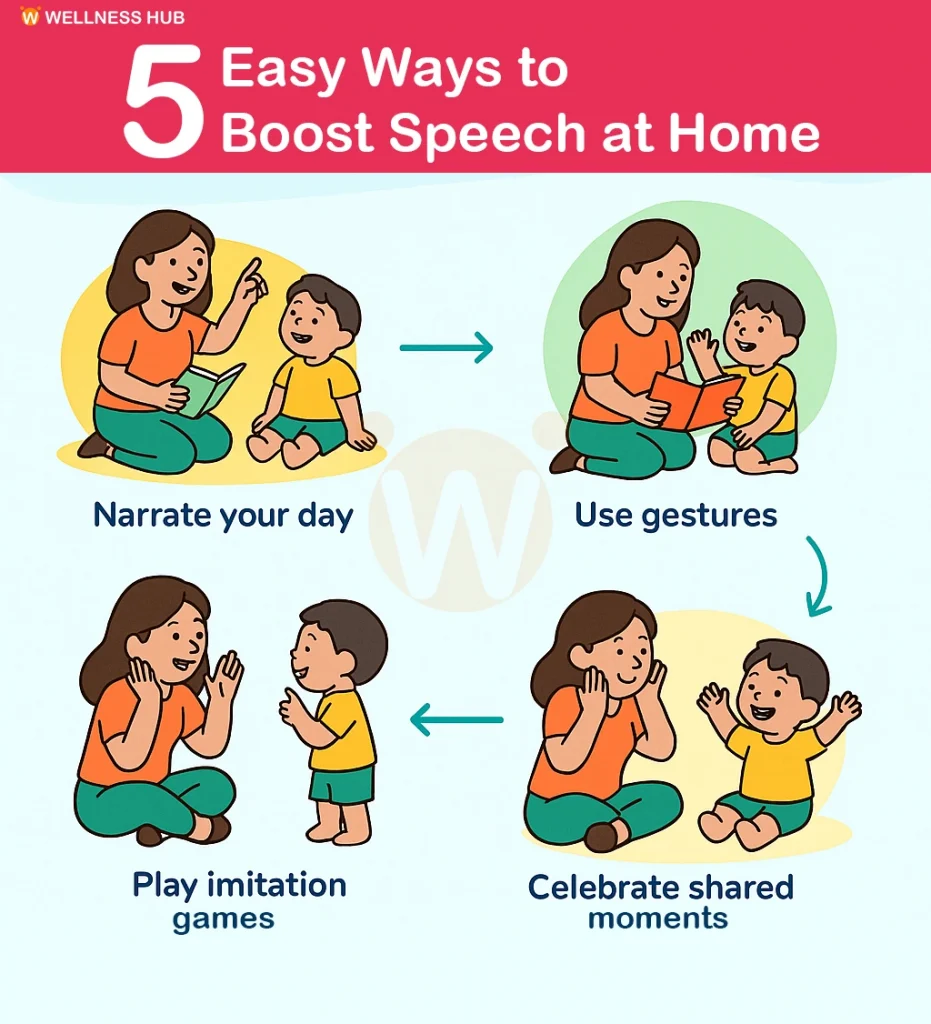
Here are a few easy ways to encourage joint attention at home:
- Narrate your daily routines
As you go about your day, talk to your child about what you’re doing.
For example: “I’m washing the apples. Look at the water splash!” Narrating everyday moments helps your child link words with actions and keeps them tuned in to you. - Read picture books together
Choose colorful, simple books and spend time pointing at pictures. Label what you see: “Look, it’s a puppy!” Pause and wait to see if your child looks or responds.
Reading together naturally builds language, attention, and connection. - Use gestures while talking
Pair your words with simple gestures — point, wave, clap, or nod.
Children often understand gestures before they fully understand words, and it encourages them to imitate and engage. - Encourage imitation games
Turn everyday moments into playful copycat games. Clap your hands, make a funny face, or tap on a table — and encourage your child to copy you.
These little games strengthen your child’s attention and social awareness. - Celebrate shared moments
When your child looks at you after seeing something exciting — like a balloon floating by — celebrate it! Smile, cheer, and show them you noticed too.
Positive reactions help your child understand how wonderful shared attention can feel.
Remember: Small steps done with love and patience can lead to big growth over time. Even just a few minutes a day can gently build your child’s confidence and communication skills.
Every Child’s Journey is Unique and That’s Okay
It’s easy to worry when your child’s development doesn’t look exactly like someone else’s. But here’s something important to remember: every child grows in their own way and at their own pace.
There’s no one “perfect” timeline for learning skills like joint attention, communication, or social interaction.
If your child is taking a little longer to meet certain milestones, it doesn’t mean you’ve done anything wrong. It simply means your child might need a different path — and that’s okay. Seeking guidance early shows love, strength, and a deep commitment to helping your child thrive.
You know your child better than anyone. If something doesn’t feel right, trust your instincts. A little support now can open up big opportunities for growth and connection later on.
Conclusion
Every child develops at their own pace, and noticing small differences is simply part of being a caring parent. If your baby isn’t showing joint attention just yet, remember — early support can make a big difference, and it’s never too soon to start encouraging those skills at home.
Simple activities like narrating your day, reading picture books, and playing imitation games can spark wonderful growth over time. And if you ever feel unsure, you don’t have to figure it out alone.
At Wellness Hub, we’re here to walk alongside you with expert advice, simple tools like our Developmental Checklist, and personalized online support.
Frequently Asked Questions:
1. What is joint attention in babies?
Joint attention is when your baby and you focus on the same thing together, like looking at a toy you point to. It is an important early skill for learning language and building relationships.
2. At what age should a baby show joint attention?
Most babies start showing joint attention between 9 and 15 months. They may follow your gaze, point to things they want, or share a toy with you.
3. What are early signs of joint attention delay?
Early signs may include not making eye contact, not following your pointing, not showing or offering toys, and not responding to their name by 12 to 15 months.
4. How can I encourage joint attention at home?
You can encourage joint attention by talking about daily activities, reading picture books, using gestures, and playing imitation games with your child every day.
5. Why is joint attention important for speech development?
Joint attention helps children link words with objects and actions. It also teaches them to share focus with others, which is key for learning to talk and communicate.
6. When should I be worried about joint attention problems?
If your child is not making eye contact, not pointing, not following your gaze by 12 months, or not responding to their name, it is a good idea to seek advice from a child development expert.
7. Can joint attention delays mean autism?
Not always. While difficulty with joint attention can be an early sign of autism, many children simply need more time or support. An early screening like the BASICS Screener can help you understand your child’s needs.
8. Does speech therapy help with joint attention?
Yes, speech therapy can greatly help children who struggle with joint attention. Therapists use fun activities to boost eye contact, pointing, imitation, and early communication skills. Wellness Hub’s online therapy programs are a great place to start.
9. How long does it take to improve joint attention?
With regular practice at home and expert support, many children show improvements within a few months. Every child’s journey is different, so progress can vary.
10. Where can I get help if I’m worried about my toddler’s development?
You can book a free consultation with Wellness Hub to talk with licensed therapists. They can guide you on joint attention, speech milestones, and next steps for your child.
About the Author:
Rajini Darugupally
M.Sc., Speech-Language Pathologist (9+ years of experience)
Rajini is a passionate and dedicated Speech-Language Pathologist with over 9+ years of experience, specializing in both developmental speech and language disorders in children and rehabilitation in adults. Driven by a desire to empower each individual to find their voice, Rajini brings a wealth of experience and a warm, genuine approach to therapy. Currently, at Wellness Hub, she thrives in a team environment that values innovation, compassion, and achieving results for their clients.
Book your Free Consultation Today
Parent/Caregiver Info:
Client’s Details:
* Error Message
